Google Ads, combined with organic search, forms the foundations of any digital marketing strategy. This is because search users are typically more motivated than those on other channels, such as social media.
However, getting people to click on your ad is only part of the journey. Once they arrive on your website, you need to make sure they have a good experience and take the desired action, whether that’s calling you, using a chatbot, or filling out a contact form.
We often find that clicks to a website from a paid digital campaign such as Google Ads can leave users lost, frustrated or confused. Let loose in the Wild West of your main site, they’re often distracted by the many other things they can do, like reading about your team, looking at fees, or exploring other topics. They may even become so frustrated at not finding what your ad promised that they seek the answers on someone else’s website.
This all has the unfortunate effect of lowering your performance. The lost opportunity makes your budget less effective, but it can also affect your Google metrics, impacting how your pay-per-click ads perform and how much you pay for each click.
The solution
All of these problems can be addressed by creating campaign landing pages. This means that rather than being directed to your main homepage or a treatment page, users who click an ad will be taken to a purpose-built page that’s relevant to their original search.
These standalone pages have one targeted goal and a clear call-to-action. They’re designed to eliminate distractions and guide the visitor towards the desired action. Depending on your campaign type, they’ll usually be specific to a certain treatment – such as dental implants – and contain information purely on that topic, without the distractions of internal links, team pages, or a third-party booking form.
Creating this targeted landing page experience reduces your bounce rate (when people “land” on your site but leave before engaging). Most importantly, it improves the user experience, which in turn improves conversions. Put simply, it’s easier for a user to get the information they need to make their decision, and it’s easier for them to act – and so they do.
The benefits
Improved quality score
By creating landing pages that are useful and relevant to users, you’ll not only improve your conversions – you’ll improve your quality score. This is Google’s method for delivering the best content to searchers. If a page doesn’t deliver a good result to its users, the search giant will choose to show a different one next time. If, on the other hand, your page performs well, Google will reward you with a better ad position and a lower cost-per-click. The result is that you’ll ultimately get more clicks, and more conversions, for the same marketing budget.
Accurate performance tracking
Dedicated landing pages also allow you to track your performance more accurately. By including a trackable telephone number and enquiry form, for instance, you can see precisely how many people acted, with no gaps in your conversion data. This also has a positive impact on future campaigns, as you put this solid data to good use by targeting a far more specific audience for the treatment.
For example, if you’re running a Google Ads campaign to advertise dental implants, you can create a landing page specifically for that treatment. By tracking how many people click on your ad and then visit the landing page, you can see how effective that ad is at driving traffic to the page. You can also see how many people complete the desired action (such as calling you or filling out a lead form), which can help you calculate your conversion rate and ROI.
Better user experience
As we’ve already touched upon, landing pages make for a far superior user experience (UX). When a search user clicks on your ad, they’re expecting to find information that’s relevant to their query. If they land on a page that’s tailored specifically to their needs and offers them something of value, they’re more likely to stick around and convert.
By using campaign landing pages that are tailored to your reader’s needs, and offer them something of value, you can improve their experience and increase the likelihood of them converting. For example, if someone is searching for “options for missing teeth” a landing page that showcases the treatment options and includes detailed information about each one will be very persuasive. Add in extra content around your experience and testimonials, providing social proof, and they’re far more likely to make an enquiry.
The best approach
Using landing pages is demonstrably more successful than simply directing users to a website. For just one Hive client, we’ve seen that the average cost-per-click has decreased by 19% across their campaign, with big reductions in the General and Implants categories compared to the previous year. We’ve also seen that the campaign page conversion rate has increased by over 20%.
So, what makes a good landing page?
Keep it simple and focused
The aim here is to keep the page focused on the desired action and eliminate any distractions. So, don’t overwhelm the visitor with too much information or too many options. For example, if your goal is that they’ll fill out a lead form, don’t include other links or options that could take them away from the page.
Use a clear and compelling headline
Your headline should grab the visitor’s attention and clearly communicate the value proposition. For example, if you’re offering dental implants, your headline could be ‘Enjoy life again and welcome back your smile with dental implants’. You could follow this with a supporting line that is clear in its offer, such as ‘Book a FREE non-clinical consultation with our implant experts today’. Bear in mind that you’ll need to keep this right at the top of the page, regardless of device, so that they can see the offer and then scroll for more information.
Include a strong call-to-action
Your call-to-action (CTA) should be clear, concise, and compelling. Use action-oriented language to encourage the visitor to take the desired action. For example, ‘Book a FREE consultation today’ or ‘Book now and save 20% on a new patient consultation’. This gives them a strong incentive to act.
Provide value and benefits
Your landing page should clearly communicate the value and benefits of your practice and treatments. Show empathy with how the individual may be feeling, explain how you can solve their problem or meet their needs. Use testimonials, case studies, or other social proof to demonstrate the effectiveness of treatment, your expertise and high levels of patient satisfaction and patient care.
Use visuals to support your message
Visuals such as images, videos or diagrams can help support your message and make your landing page more engaging. Use high-quality bespoke images that are relevant to the visitor’s needs and showcase the benefits of your service and your relationships with your patients. While stock images can be tempting due to the speed and ease of finding them, they’re often lacking in emotion so are better left by the wayside in this context.
Don’t make them work too hard
If your landing page includes a form, make sure it’s prominent on the page, as well as being simple and easy to fill out. Online attention spans are short, so don’t ask for too much information; this can be overwhelming and discourage the visitor from completing the form. Use dropdowns for specific information where possible and only ask for the details necessary to follow up with the lead.
Make sure it’s mobile friendly
More and more people are using their mobile devices for browsing – meaning as much as 70% of your audience will probably be on a mobile device. So do make sure your landing page is optimised for phone or tablet users and is easy to navigate and interact with on a small screen.
Get started
Landing pages are a crucial part of any Google Ads strategy. They help improve your quality score, track your campaign’s performance and visitor actions more accurately, and improve the user experience. By creating landing pages that are simple, highly focused, and tailored to the user’s needs, you can increase the likelihood of conversion and improve your ROI. A well-crafted landing page really will take your Google Ads strategy to the next level.
If you’d like to find out more, just get in touch – we can show you some high-performing examples and review your current Google Ads strategy to find opportunities you might be missing.








